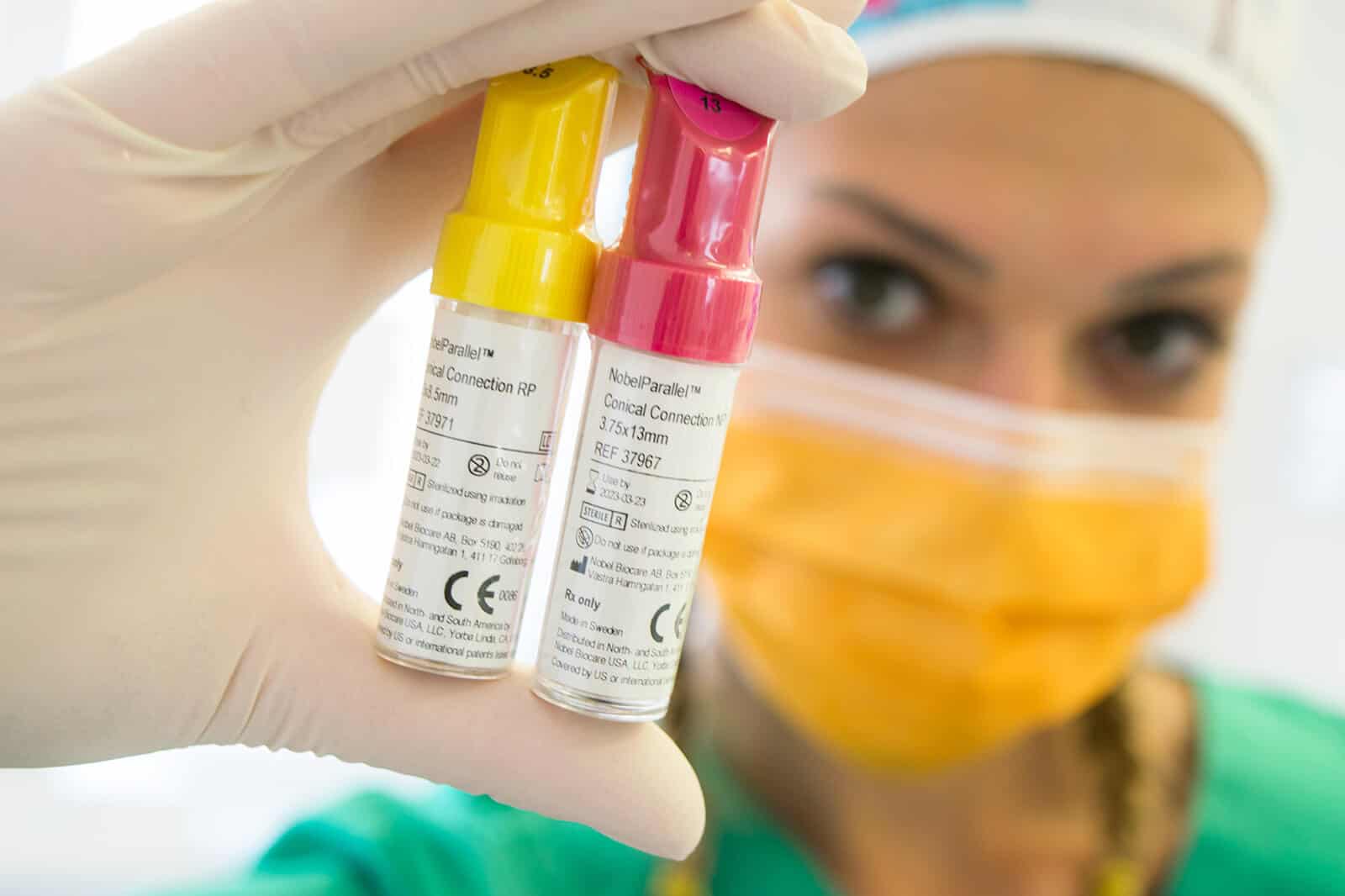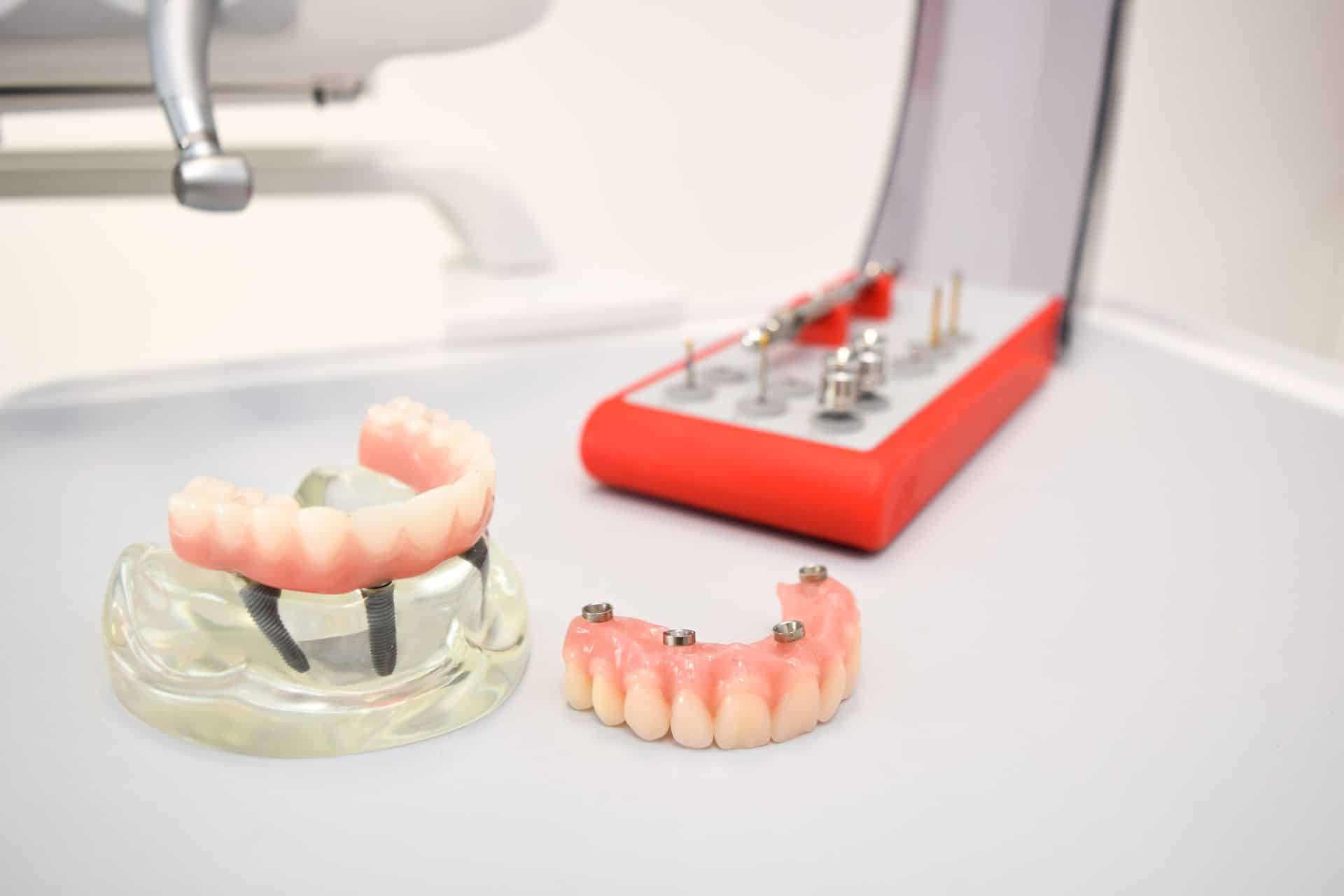Dental implants
People who struggle with one or more missing teeth or even complete edentulism for years often
wonder if there is a better solution than the current one? The answer is – of course there is!
What Are All Possible Options With Dental Implants?
Whether it is a replacement of one tooth, more than one tooth or complete toothlessness, the amount or number of implants required is defined at the first examination.
If one tooth is missing, one implant is placed in the same position and a ceramic crown is placed. If two or three teeth are missing, the dentist decides whether, for example, two or three implants will be required, or if four teeth are missing in one row, it may be necessary to install only two implants that will carry a four-element bridge to fill the empty space. It’s all a matter of the dentist’s clinical judgment. A lot of patients determine the number of implants themselves, which is a big mistake, because there are big differences and discrepancies in price, so the best possible solution is to go for an expert examination.
In the case of complete edentulousness, it all depends on the density of the bone and how it is distributed across the jaw. By installing only six implants, it is possible to return a series of twelve perfectly white and symmetrical teeth to the patient with a fixed ceramic bridge or composite denture – ALL-ON-6 method. If the bone is poor in the lateral areas and present in the frontal region, either a fixed solution (ALL-ON-4) or a semi-fixed solution (mobile prosthesis with reduced palate at 2 or 4 locators or 1-3 rungs) can be achieved. In all cases, a set of twelve beautiful teeth is obtained which, depending on whether the solution is fixed or semi-fixed, differs in terms of static.



What are Dental Implants?
Dental implants are small titanium screws that have been implanted for many years, to be exact for more than sixty, and represent a perfect replacement for a missing tooth or more of them. Whether the case is one or more missing teeth or even complete edentulism, implants are becoming the number one choice of every dentist in modern dentistry. Dental implanting is a completely painless procedure that is done under local anaesthesia, where an oral surgeon implants that small titanium screw into the jawbone in a little less than fifteen minutes and after closing, i.e. stitching the gum, leaves that very implant to “rest” (a term called osseointegration) where the implant joins, i.e. osseointegrates with the patient’s bone. After approximately 4 – 6 months for the upper jaw and 3 – 4 months for the lower jaw, the patient comes for his implant opening and loading it with appropriate prosthetic solution, whether it is a ceramic fused metal or zircon crowns, bridges, or fixed or semi-fixed dentures.
Prerequisites for inserting implants
Each patient that is interested in solving his oral problem with dental implants must perform two important steps. The first one is to do a dental CBCT scan of one or both jaws, based on the positions where the teeth are missing and the second step is to talk to a dentist who will read the X-ray image 4 and propose a corresponding treatment plan based on a clinical evaluation of the gum and surrounding tissue. Patients with appropriate bone density and good general medical history are excellent candidates for inserting implants. Patients that have certain chronic diseases must consult their general medical practitioner or medical specialist and together with their dentist determine whether they fall in the possible risk category where implants can be inserted, but then the success and longevity greatly depend on the general condition of the patient and the progressivity of his disease.
Dental implants’ duration
Once inserted, dental implants can really last forever, but there is a series of protocols that must be obeyed, and they are nothing less than purely – oral hygiene! Once patients have their implants inserted and loaded with a corresponding prosthetic solution, the most important segment is to maintain the area around their connection. The prosthetic part should be washed regularly, twice a day, with a toothbrush and toothpaste with circular movements, the area between the gum and prosthetic component should be rinsed with a water flosser (Waterpick), empty spaces should be cleaned with an interdental brush and dental floss and rinsed with mouthwash once or several times a day. All this seems complicated, but if you were to accept that it takes 5 minutes every morning and 5 minutes every evening, 10 minutes daily isn’t such a great effort considering the invested.
Detailed daily oral hygiene enables the space around the implants to always be flawlessly clean, therefore reducing the possibility of a large concentration of various bacteria that can cause chronic peri-implantitis, resulting in the loss of implants. Patients that contract some severe diseases after inserting the implants can also lose them, but unfortunately, it is impossible to prejudge this at the moment when the decision to implant or not is made.
360° virtual tour
Visit our clinic with a virtual walk
Looking for more information?
Visit us directly at our address or contact us by email or phone
Our address
E-mail address
Monday - Friday
07:00 - 21:00
Saturday
Closed
Sundays and holidays
Closed
Our adress
E-mail address
Monday - Friday
07:00 - 21:00
Saturday
Closed
Sundays and holidays
Closed




